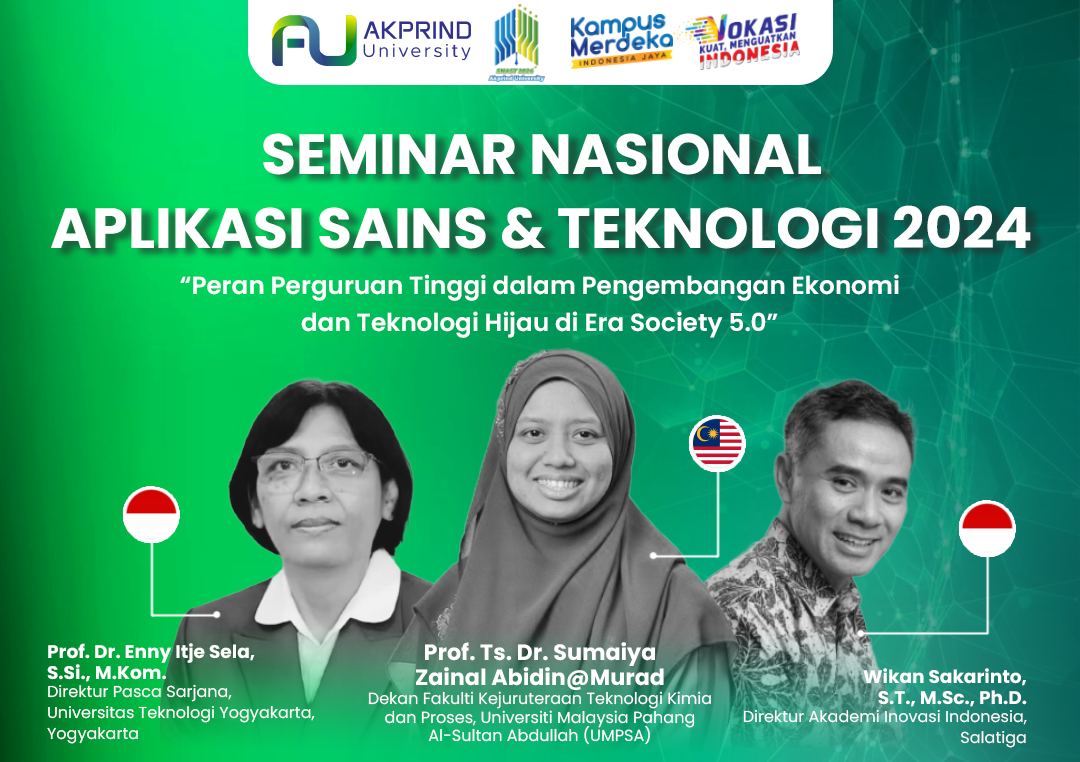STUDI UJI IMPAK PADA KOMPOSIT BERBAHAN CAMPURAN SERBUK KEONG SAWAH UNTUK FRAME DRONE
DOI:
https://doi.org/10.34151/prosidingsnast.v1i1.4948Keywords:
Drone , Rice Snail (Pilla ampullacea), Composite, Impact TestAbstract
The rice snail (Pilla ampullacea) is an aquatic snail that is commonly found in the freshwater waters of Southeast Asia. The shell of the sawah snail has a dark green to blackish color and contains calcium carbonate (CaCO3), which has the potential to be used as a filler in the manufacture of composites. This study aims to identify the effect of the addition of rice snail shell powder on the mechanical properties of composites, as well as to compare their performance with conventional filler-based composites. In addition, this study also evaluates the production cost of the composite of rice snail shell powder for drone frames. In this study, researchers used the literature study method. The testing stages include making specimens, then conducting impact, tensile and bending tests on these specimens, as well as collecting and analyzing test data. The results showed that rice snail shell powder was not very significant in improving performance as a composite filler. Carbon fiber still shows superior performance, with average impact test results of 332,5 kJ/m2, tensile test of 742,8610 MPa and bending test of 187,8 MPa. Although the test data is relatively far in performance, the use of rice snail shell powder is still worthy of further research because of its abundant availability in nature, so it has economic value. In addition, the potential to reduce environmental pollution due to carbon waste and help farmers overcome pests in rice plants is also a reason.
References
Bagaskoro, Y. (2024). ANALISIS KEKUATAN TARIK DAN BENDING STRUKTUR KOMPOSIT SERAT KARBON EPOXY DENGAN METODE MANUFAKTUR HAND LAY-UP [ Institut Teknologi Dirgantara Adisutjipto]. http://eprints.stta.ac.id/id/eprint/2426
Inayah, Y., Anggraeni, A. S. P., & Karisma, A. D. (2023). Pembuatan Biokompatibel Komposit dari Nano Hidroksiapatit Berbahan Dasar Cangkang Keong Sawah (Pila ampullacea) dengan Kombinasi Biopolimer PVA (Polyvinyl Alcohol) sebagai Bahan Dasar Pembuatan Suture Anchor. Jurnal Teknologi, 11(1), 58–66. https://doi.org/10.31479/jtek.v11i1.278
Irnawan, D., & Karomah, B. (2019). KAJIAN UKURAN SERBUK KOMPOSIT LIMBAH CANGKANG TELUR TERHADAP KETANGGUHAN IMPAK. In JURNAL ARSITEKTUR GRID-Journal of Architecture and Built Environment (Vol. 1, Issue 2).
Perdana, M., Hadi, S., Rahman, E. G., & Prastiawan. (2018). ANALISA SIFAT FISIK DAN MEKANIK DARI GREEN COMPOSITE MATERIAL DARI LIMBAH STYROFOAM, AMPAS TEBU DAN CANGKANG TELUR SEBAGAI RANGKA DRONE. Jurnal Momentum, 20(1), 38–44. https://doi.org/10.21063/JM.2018.V20.1.38-44
Pramono, G. E., Sutisna, S. P., Bogor, K., Soleh Iskandar Km, J. K. H., Badak, K., Sareal, T., & 16162, B. (2017). PERBANDINGAN KARAKTERISTIK SERAT KARBON ANTARA METODE MANUAL LAY-UP DAN VACUUM INFUSION DENGAN PENGGUNAAN FRAKSI BERAT SERAT 60%. Jurnal Ilmiah Teknik Mesin, 3(1), 1–6.
Pratama, D. S., Lubis, R. S., Setiawan, F., & Sofyan, E. (2023). Uji Impact Material Komposit Campuran Serat Bambu Dan Pasir Besi Menggunakan Metode Hand Lay Up. Journal of Applied Mechanical Engineering and Renewable Energy (JAMERE), 3(1), 28–33. https://journal.isas.or.id/index.php/JAMERE
Sakinah, P. I., Tanne, Y. A., Isa, F. I., & Hegemur, M. H. (2023). Kemajuan dan Pengembangan Drone pada Sektor Konstruksi di Indonesia. Jurnal Teknik Sipil Universitas Teuku Umar, 9(1), 65–73.
Siregar, I. R., Alfatih, M. F., & Alimi, S. (2022). EKSPERIMEN UJI KEKUATAN TARIK KOMPOSIT DENGAN RESIN EPOXY DAN PENGUAT SERAT KULIT SINGKONG MENGGUNAKAN METODE HAND LAY UP. Teknika STTKD: Jurnal Teknik, Elektronik, Engine, 8(2), 220–226. https://doi.org/10.56521/teknika.v8i2.610
Zulfikar, M., Setiawan, F., & Wicaksono, D. (2023). PERBANDINGAN METODE VACUUM INFUSION & VACUUM BAGGING PADA KOMPOSIT BERPENGUAT FIBER KARBON KEVLAR. Teknika STTKD: Jurnal Teknik, Elektronik, Engine, 9(1), 99–106. https://doi.org/10.56521/teknika.v9i1.860
Downloads
Published
Issue
Section
License
Copyright (c) 2024 Ihsan Fuady, Hadi Saputra, Saiful Huda

This work is licensed under a Creative Commons Attribution-ShareAlike 4.0 International License.







